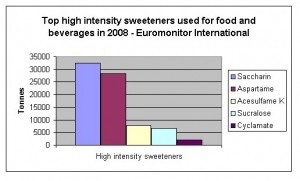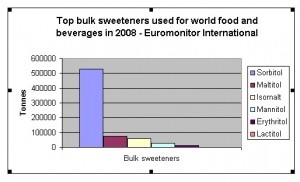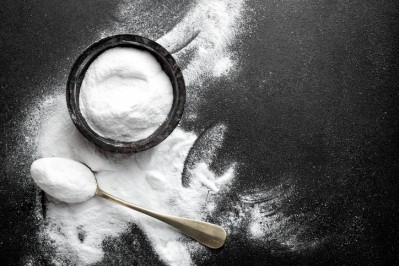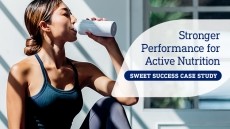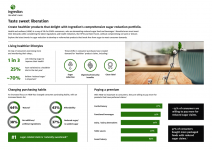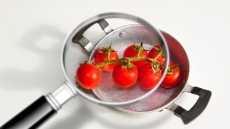Global food use of bulk and high intensity sweeteners
Humans are predisposed to like sweet foods, and sugar (sucrose) is far and away the most popular sweetener added to foods. But rising obesity rates are causing more attention to be paid to products' sugar content, and the development of ‘light’ foods, with fewer calories, is a major driver for new product development.
This means that there is massive interest in low or zero calorie ingredients that can provide the same or similar sweetness in a healthier product. But reducing sugar is rarely so simple as to just remove the sugar and replace it directly with a sweetener. Sugar performs other technical functions in formulations as well as giving it the sweet edge, such as bulking it out or giving it the right texture.
Moreover, different sweeteners have different taste profiles, so to meet consumer taste expectations for a particular product several sweeteners are often blended.
And just to complicate matters even more, consumers in different countries and regions have slightly different ideas about what the most pleasant sweet taste is.
There are two main categories of sweeteners used in foods and beverages: bulk sweeteners and polyols; and high intensity sweeteners.
Bulk sweeteners, including sugars, are also known as nutritive sweeteners, have a technical role in the food as well as sweetening it. They contribute to the bulk, the texture and the viscosity of foods.
High intensity sweeteners, also called non-nutritive, do not have a technical role in addition to their sweetening capacity. This means that if any of the attributes normally provided by sugars is required, the chosen high intensity sweetener will need to be blended with a bulk sweetener or some other bulking agent.
High intensity sweetener tend to be more expensive than bulk, but are used in a far smaller quantities.
Euromonitor International data put world use of high intensity sweeteners at 77183.4 tonnes in 2008 – of which the most popular five, saccharin, aspartame, acesulfame K, sucralose and cyclamate – make up the lion’s share.
Euromonitor found that 70336474.9 tonnes of sugars and bulk sweeteners were used.
The top non-sugarbulk sweeteners made up 700579 tonnes.
